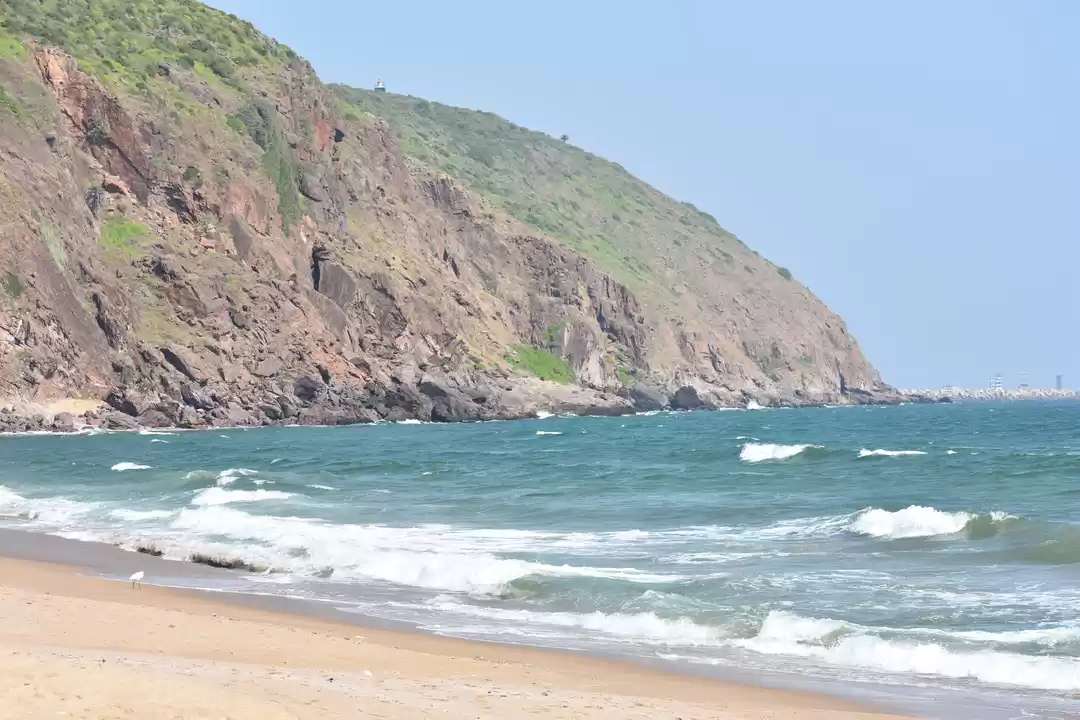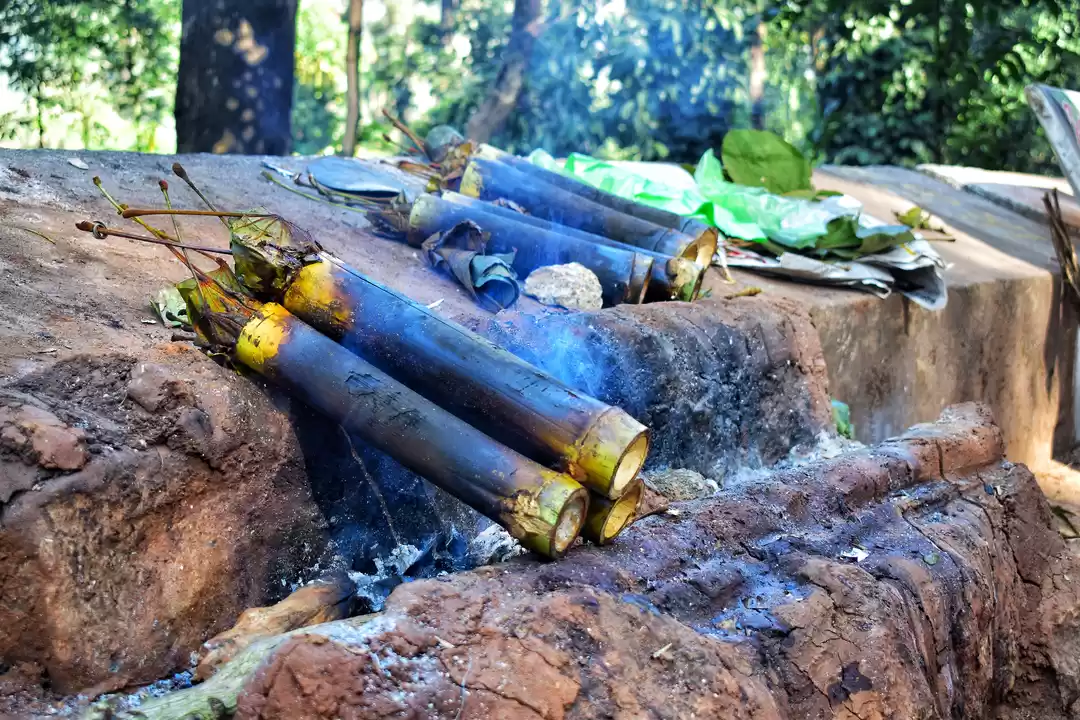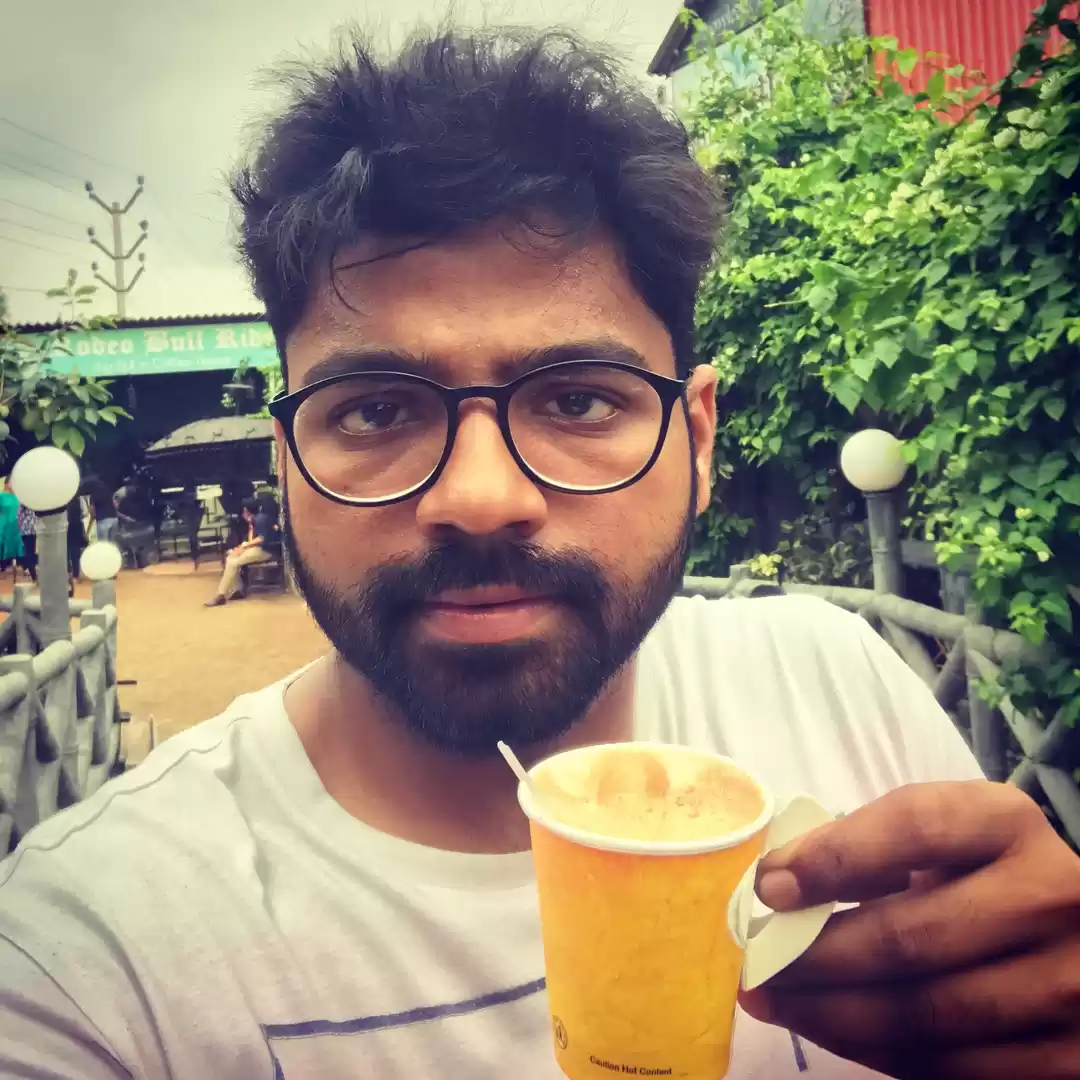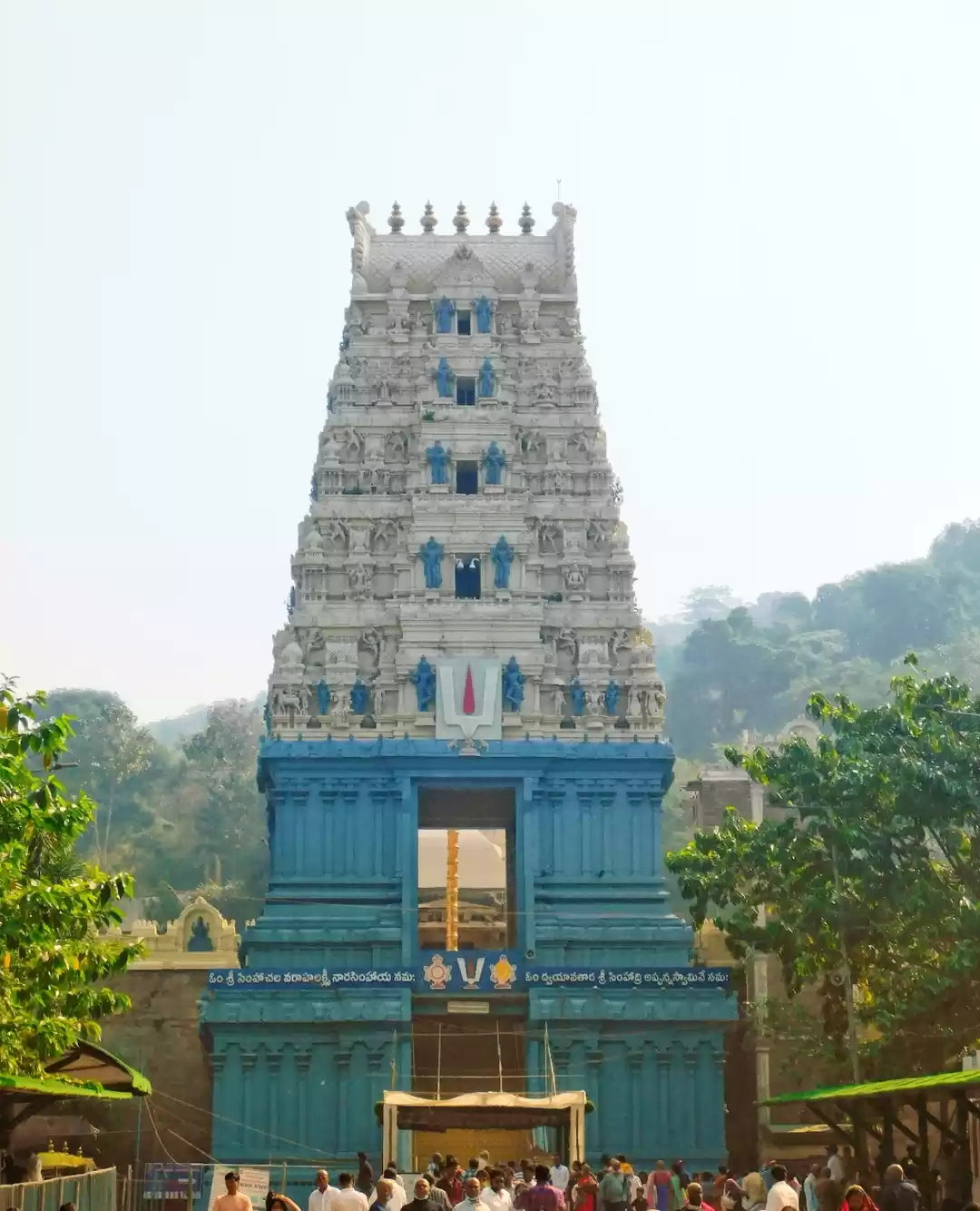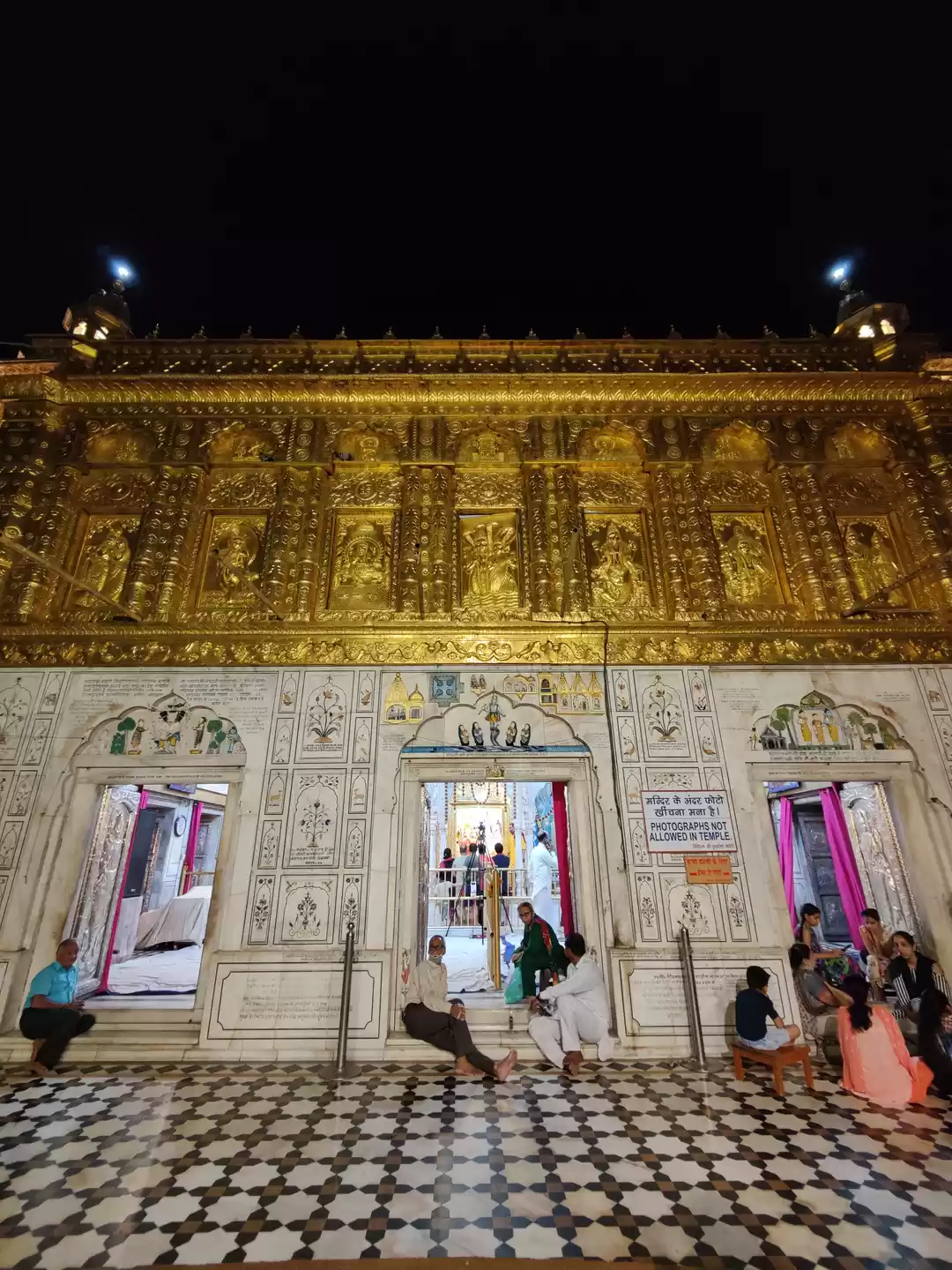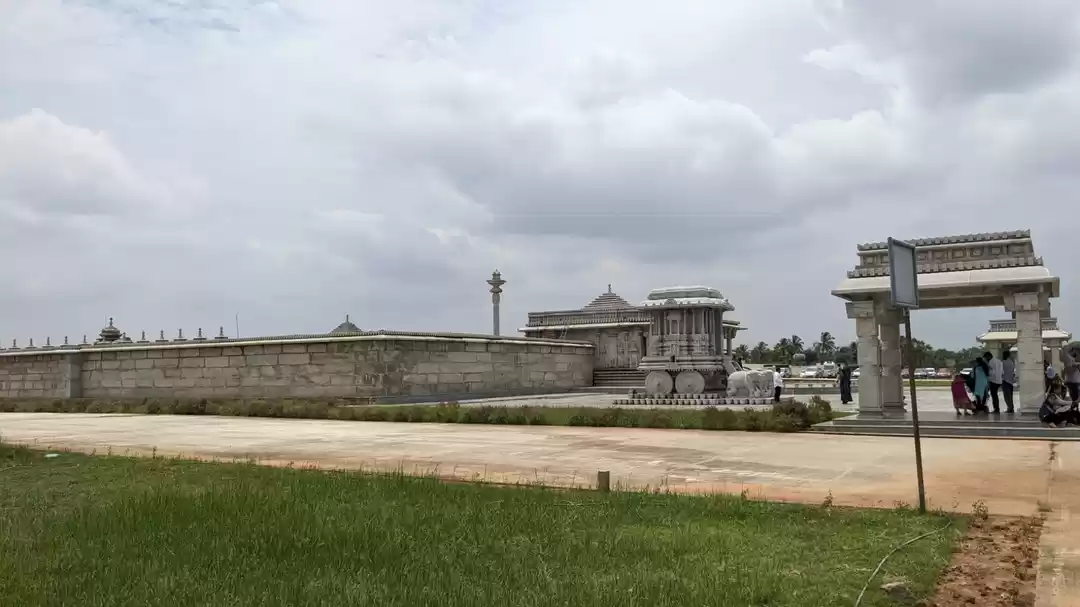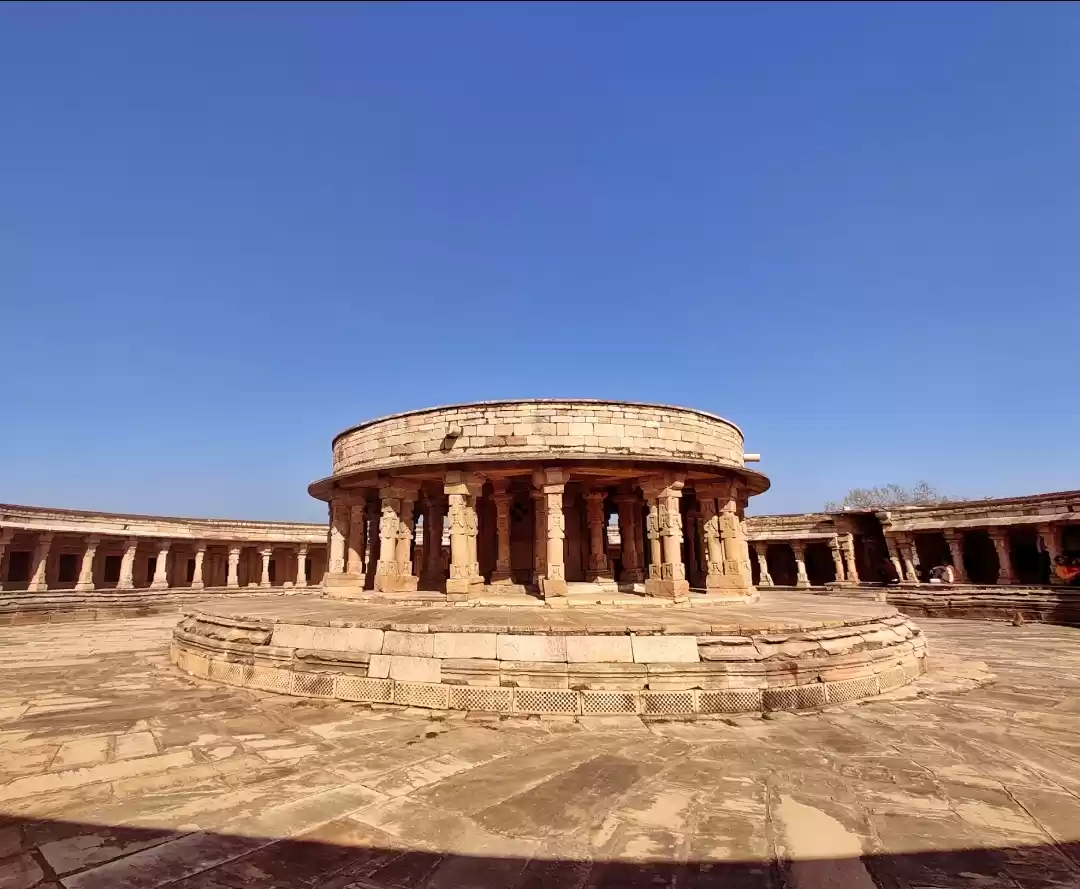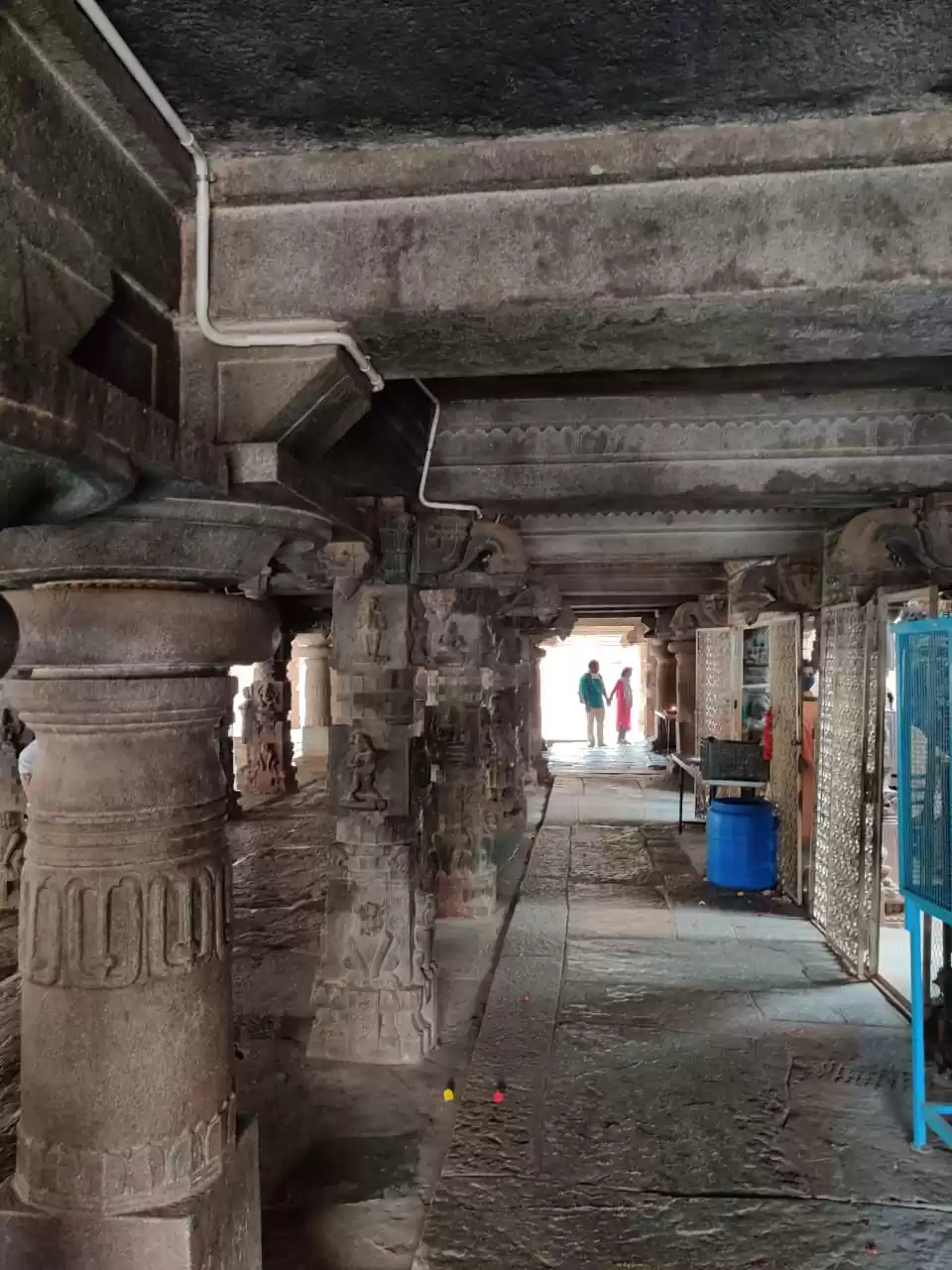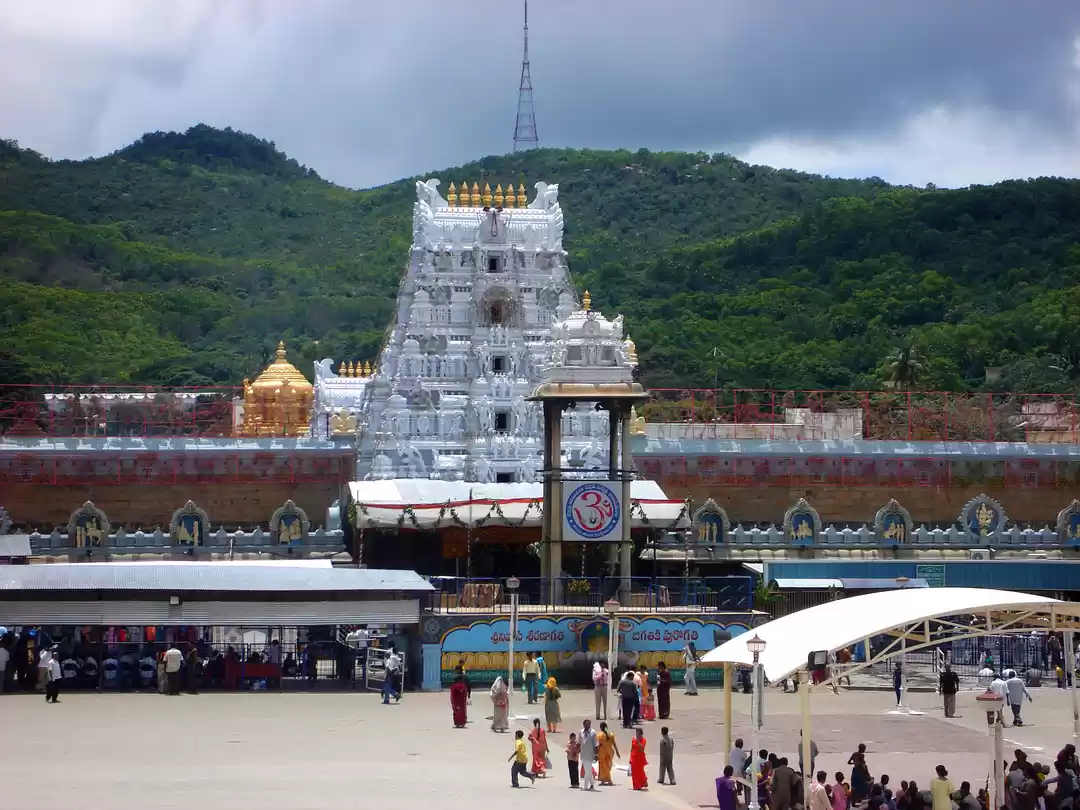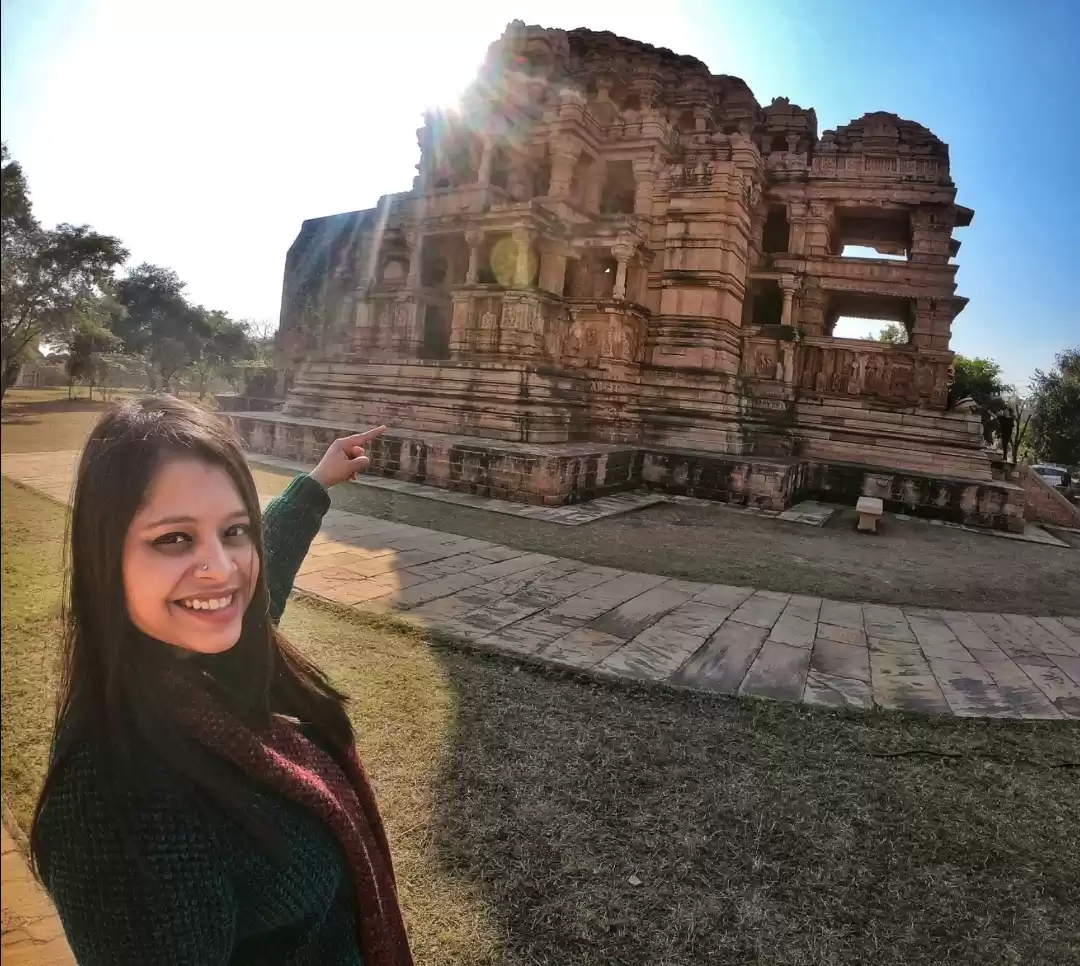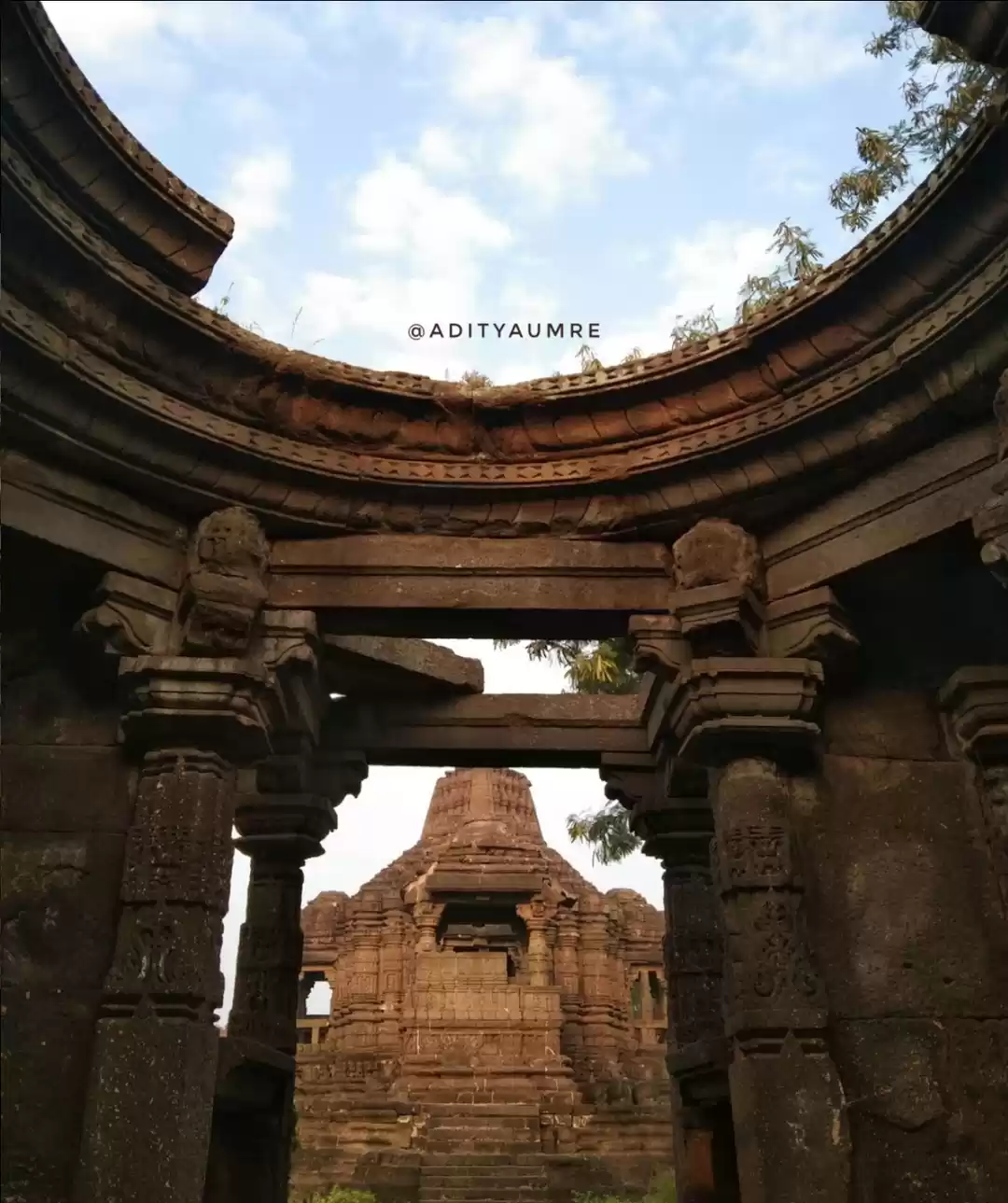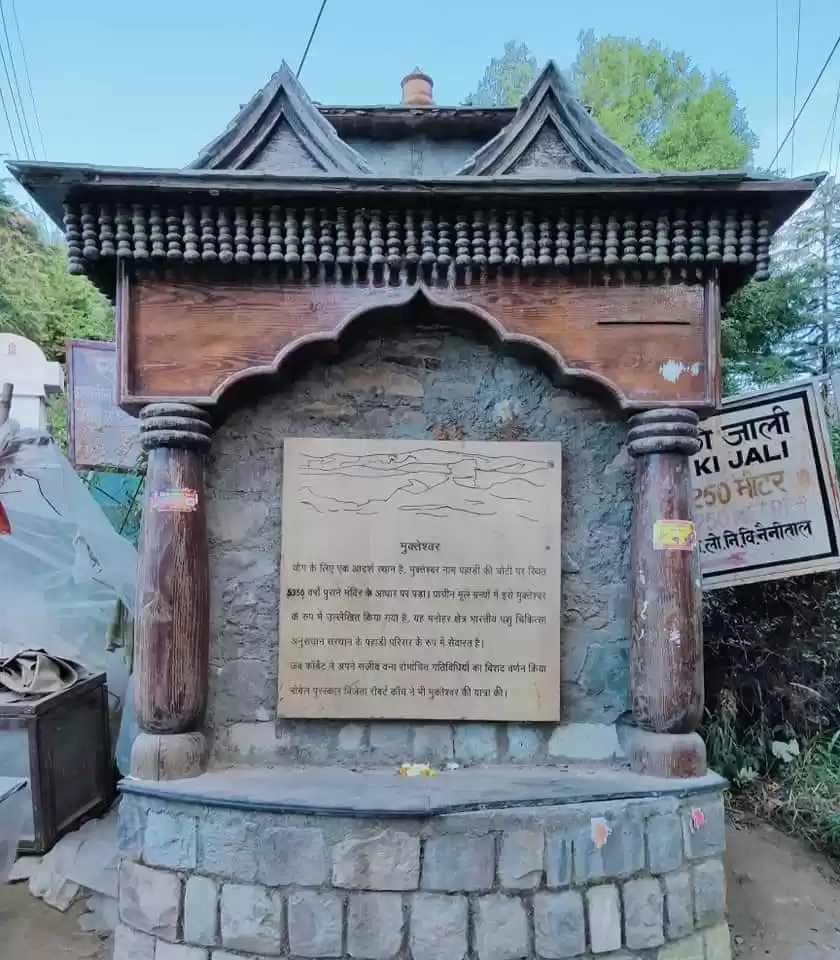Are you looking for a spiritual and cultural destination that will take you back in time and fill you with awe and wonder? If yes, then you should definitely visit the Simhachalam Temple, a magnificent shrine dedicated to Lord Narasimha, a half-man half-lion incarnation of Lord Vishnu, located in the city of Visakhapatnam in Andhra Pradesh. This temple is not only a marvel of architecture and history, but also a place of great significance and mystery, as it houses a unique idol of Lord Narasimha that is covered with sandalwood paste throughout the year, except for one day, when the devotees can have a glimpse of the original form of the Lord. Read on to find out more about this amazing temple and why you should make it your next destination.
The Legend of Simhachalam Temple: How Lord Narasimha Appeared Here to Save Prahlada
The Simhachalam Temple has a fascinating legend behind its origin, which dates back to the ancient times, when Lord Vishnu took the form of Narasimha to protect his devotee Prahlada from his father Hiranyakashipu, a demon king who hated Vishnu and tried to kill Prahlada for worshipping him. According to the legend, Hiranyakashipu had obtained a boon from Lord Brahma that he could not be killed by any human or animal, by any weapon, by day or night, inside or outside, on the earth or in the sky. He became arrogant and oppressive, and demanded that everyone should worship him as the supreme Lord. However, his son Prahlada was a staunch devotee of Lord Vishnu, and refused to obey his father’s orders. Hiranyakashipu tried various ways to kill Prahlada, such as throwing him into fire, drowning him in water, poisoning him, and crushing him under an elephant, but Prahlada was saved by the grace of Lord Vishnu every time. Finally, Hiranyakashipu asked Prahlada if his Lord was present in a pillar in his palace, and Prahlada replied that Lord Vishnu was present everywhere. Hiranyakashipu then smashed the pillar with his mace, and to his surprise, Lord Vishnu emerged from the pillar in the form of Narasimha, a half-man half-lion creature, who was neither human nor animal, and who had claws as weapons. He caught Hiranyakashipu and dragged him to the threshold of the palace, which was neither inside nor outside, and placed him on his lap, which was neither on the earth nor in the sky. He then tore apart Hiranyakashipu’s chest and killed him at the twilight hour, which was neither day nor night. Thus, Lord Narasimha fulfilled the conditions of the boon and saved Prahlada from his father’s tyranny.
After killing Hiranyakashipu, Lord Narasimha was still furious and his anger could not be pacified by anyone. He roamed around the earth, destroying everything in his path. The gods and sages were terrified and prayed to Lord Vishnu to calm down his wrath. Lord Vishnu then asked Prahlada to approach Lord Narasimha and pacify him with his devotion. Prahlada obeyed and went to Lord Narasimha, who was sitting on the Simhachala hill, and offered him prayers and praises. Lord Narasimha was pleased with Prahlada’s devotion and blessed him. He also agreed to stay on the hill and grant his blessings to anyone who worships him with faith and love. He also manifested himself in a special form, which was a combination of Varaha and Narasimha, two of his incarnations. He had the face of a boar and the body of a lion, and he was holding his consort Lakshmi on his lap. This form of Lord Narasimha is known as Varaha Lakshmi Narasimha, and it is the presiding deity of the Simhachalam Temple.
However, Lord Narasimha’s form was still very fierce and radiating heat, and the devotees could not bear to look at him or touch him. Therefore, the sages decided to cover him with sandalwood paste, which would cool him down and also conceal his anger. They also made a rule that the sandalwood paste should be applied to the idol every day, and that it should be removed only once a year, on the auspicious day of Akshaya Tritiya, when the devotees can have a glimpse of the original form of Lord Narasimha. This tradition has been followed for centuries, and it is one of the main attractions of the Simhachalam Temple.
The History of Simhachalam Temple: How the Temple Originated and Developed Over the Centuries
The Simhachalam Temple has a rich and glorious history, which spans over a thousand years. The temple is believed to have been built in the 11th century by the Eastern Chalukyas, who ruled over the region of Vengi, which is now part of Andhra Pradesh. The temple was later patronized and renovated by various dynasties and rulers, such as the Cholas, the Gajapatis, the Vijayanagara Empire, the Golconda Sultanate, and the British Raj. The temple has witnessed many wars, invasions, and changes of power, but it has survived and thrived as a symbol of faith and culture.
The temple has many inscriptions and records that testify to its history and importance. The earliest inscription dates back to 1098 CE, and it mentions the name of the temple as Simhagiri. The inscription also records the donation of lands and villages to the temple by the Chalukya king Kulothunga Chola I. Another inscription from 1137 CE records the donation of a village to the temple by the Chola king Vikrama Chola. The temple also has inscriptions from the Gajapati kings of Orissa, who conquered the region in the 15th century and made the temple their royal shrine. The most famous Gajapati king was Kapileswara Gajapati, who built the main entrance tower or gopuram of the temple in 1516 CE. He also donated many jewels and ornaments to the temple, and made arrangements for the daily worship and festivals of the temple. The temple also has inscriptions from the Vijayanagara kings, who ruled over the region in the 16th century and protected the temple from the Muslim invasions. The most notable Vijayanagara king was Krishnadevaraya, who visited the temple in 1519 CE and offered many gifts and grants to the temple. He also composed a famous poem in praise of Lord Narasimha, which is inscribed on the walls of the temple. The temple also has inscriptions from the Golconda sultans, who conquered the region in the 17th century and imposed a heavy tax on the temple. The temple was saved from destruction by the intervention of the local chieftains and nobles, who paid the tax and maintained the temple. The temple also has inscriptions from the British rulers, who took over the region in the 18th century and granted some privileges and concessions to the temple. The temple was also visited by some eminent personalities, such as the poet Rabindranath Tagore, the freedom fighter Mahatma Gandhi, and the president Sarvepalli Radhakrishnan.
The temple has also been the subject of many legends and miracles, which attest to its sanctity and power. One of the legends says that the temple was once attacked by a Muslim king, who tried to break the idol of Lord Narasimha with his sword. However, as soon as he touched the idol, his arm became paralyzed and he fell down unconscious. He was then cured by the grace of Lord Narasimha, who appeared in his dream and asked him to repent and worship him. The king then became a devotee of Lord Narasimha and donated many lands and jewels to the temple. Another legend says that the temple was once visited by a blind poet, who composed a beautiful song in praise of Lord Narasimha. As soon as he finished his song, he regained his sight and saw the Lord in his full glory. He then thanked the Lord and dedicated his life to his service. Another legend says that the temple was once visited by a devotee, who had a severe stomach ache. He prayed to Lord Narasimha and applied some sandalwood paste from the idol to his stomach. He was then cured of his pain and felt a divine bliss. He then realized that the sandalwood paste was not ordinary, but it was the essence of Lord Narasimha himself.
The Architecture of Simhachalam Temple: How the Temple Reflects the Orissan and Chalukyan Styles of Temple Construction
The Simhachalam Temple is a marvel of architecture and art, which reflects the influence of the Orissan and Chalukyan styles of temple construction. The temple is built on a hill, which is about 300 meters above the sea level, and covers an area of about 10 acres. The temple has a complex and elaborate structure, which consists of several parts, such as the gopuram, the mandapam, the sanctum, the pillars, the sculptures, and the carvings.
The gopuram or the main entrance tower of the temple is a magnificent structure, which is about 40 meters high and has 16 stories. The gopuram is decorated with intricate carvings and sculptures of various gods, goddesses, and animals, which depict the stories and legends of the temple. The gopuram was built by the Gajapati king Kapileswara Gajapati in 1516 CE, and it is considered as one of the finest examples of the Orissan style of temple architecture.
The mandapam or the hall of the temple is a spacious and elegant structure, which has four entrances and four pillars. The mandapam is used for conducting various rituals and ceremonies, and also for accommodating the devotees. The mandapam has beautiful carvings and paintings on the walls and ceilings, which illustrate the scenes and events from the Ramayana, the Mahabharata, and the Bhagavata Purana. The mandapam also has a shrine dedicated to Lord Ganesh, the elephant-headed god of wisdom and success. The mandapam was built by the Chalukya king Bhima I in the 11th century CE, and it is considered as one of the finest examples of the Chalukyan style of temple architecture.
The sanctum or the innermost chamber of the temple is a sacred and secret structure, which houses the idol of Lord Narasimha. The sanctum is a small and dark room, which has a single entrance and a single window. The sanctum is covered with thick walls and doors, which are made of stone and metal. The sanctum is also guarded by priests and security personnel, who ensure that no one can enter or see the idol without permission. The idol of Lord Narasimha is a rare and mysterious sight, as it is covered with sandalwood paste throughout the year, except for one day, when the paste is removed and the devotees can have a glimpse of the original form of the Lord. The idol is about 1.5 meters high and 0.5 meters wide, and it has the face of a boar and the body of a lion. The idol is also holding his consort Lakshmi on his lap, and he has four arms, which hold a conch, a discus, a mace, and a lotus. The idol is made of black stone, and it is believed to be self-manifested, or svayambhu. The idol is also adorned with various jewels and ornaments, which are donated by the devotees and the rulers. The sanctum is the most important and revered part of the temple, and it is considered as the abode of Lord Narasimha himself.
The pillars or the supporting structures of the temple are also remarkable and artistic, as they have intricate carvings and sculptures of various gods, goddesses, and animals, which display the skill and craftsmanship of the temple builders. The pillars are made of stone and metal, and they have different shapes and sizes, such as square, octagonal, circular, and hexagonal. The pillars also have different names and functions, such as the kalyana mandapam pillar, which is used for conducting the marriage ceremony of Lord Narasimha and Lakshmi, the natya mandapam pillar, which is used for performing the dance and music programs of the temple, and the mukha mandapam pillar, which is used for displaying the processional deity of the temple. The pillars are also decorated with various motifs and designs, such as floral, geometric, and animal patterns. The pillars are the most visible and attractive parts of the temple, and they reflect the diversity and creativity of the temple architecture.
The sculptures or the three-dimensional representations of the temple are also splendid and impressive, as they depict the various forms and aspects of Lord Narasimha, as well as other gods, goddesses, and mythical creatures. The sculptures are made of stone, metal, wood, and clay, and they have different sizes and styles, such as large, medium, small, realistic, abstract, and stylized. The sculptures also have different locations and orientations, such as on the walls, on the ceilings, on the pillars, on the doors, and on the pedestals. The sculptures are the most expressive and dynamic parts of the temple, and they convey the message and mood of the temple. Some of the notable sculptures of the temple are the dasavatara or the ten incarnations of Lord Vishnu, the narasimha shila or the stone slab with the imprint of Lord Narasimha’s claws, the simha vahana or the lion vehicle of Lord Narasimha, and the lakshmi narasimha or the form of Lord Narasimha with Lakshmi.
The carvings or the two-dimensional representations of the temple are also exquisite and elegant, as they illustrate the various scenes and stories of the temple, as well as other religious and cultural themes. The carvings are made of stone, metal, wood, and clay, and they have different shapes and patterns, such as rectangular, circular, oval, and triangular. The carvings also have different colors and textures, such as black, white, red, green, and yellow. The carvings are the most detailed and intricate parts of the temple, and they enhance the beauty and charm of the temple. Some of the notable carvings of the temple are the ramayana or the epic of Lord Rama, the mahabharata or the epic of the Pandavas and the Kauravas, the bhagavata purana or the scripture of Lord Krishna, and the narasimha purana or the scripture of Lord Narasimha.

The Festival of Akshaya Tritiya at Simhachalam Temple: How the Devotees Get a Glimpse of the Original Form of Lord Narasimha
The Simhachalam Temple is famous for its annual festival of Akshaya Tritiya, which falls on the third day of the bright half of the lunar month of Vaisakha, usually in April or May. This festival is also known as Chandana Yatra or Nijaroopa Darshan, and it is the most important and awaited event of the temple, as it is the only day when the sandalwood paste is removed from the idol and the devotees can have a glimpse of the original form of Lord Narasimha. This festival is celebrated with great pomp and fervor, and it attracts lakhs of devotees from all over the country and the world, who come to witness this rare and auspicious sight.
The festival begins with the removal of the sandalwood paste from the idol, which is done by the priests in a ritualistic manner. The paste is removed in layers, starting from the feet and ending with the face. The paste is collected and distributed among the devotees as prasadam or sacred offering. The removal of the paste takes about two hours, and during this time, the devotees chant the names and praises of Lord Narasimha, and also offer flowers, fruits, and sweets to him. The removal of the paste also reveals the various jewels and ornaments that adorn the idol, such as the crown, the necklace, the earrings, and the bracelets. The idol is then bathed with water, milk, honey, and other liquids, and then decorated with fresh sandalwood paste, flowers, and clothes. The idol is then ready for the darshan or the viewing of the devotees, who queue up in long lines to have a glimpse of the Lord. The darshan lasts for about 12 hours, and during this time, the devotees feel a divine bliss and joy, as they see the Lord in his full glory. The darshan is also accompanied by various cultural and religious programs, such as music, dance, drama, and discourse, which add to the festive spirit and atmosphere. The festival ends with the reapplication of the sandalwood paste on the idol, which is done by the priests in a reverse manner. The paste is applied in layers, starting from the face and ending with the feet. The paste is then left on the idol for the rest of the year, until the next Akshaya Tritiya.
The festival of Akshaya Tritiya is a unique and special occasion, which showcases the mystery and majesty of Lord Narasimha, and also the devotion and faith of the devotees. The festival is also considered as a very auspicious and beneficial day, as it is believed that any good deed or charity done on this day will result in infinite and eternal rewards. The festival is also a symbol of the bond and harmony between the Lord and his devotees, who share a mutual love and respect for each other.
How to Reach Simhachalam Temple: A Travel Guide for the Visitors
The Simhachalam Temple is easily accessible and well-connected by various modes of transport, such as road, rail, and air. The temple is located about 18 km from the city of Visakhapatnam, which is the largest city and the administrative headquarters of Andhra Pradesh. Visakhapatnam is also a popular tourist destination, which offers many attractions and amenities for the visitors. Here are some details and tips on how to reach and visit the Simhachalam Temple:
By road: The temple is connected by a good network of roads, which link it to the city of Visakhapatnam and other nearby towns and villages. The temple can be reached by buses, taxis, autos, or private vehicles, which are easily available and affordable. The temple has a large parking area, which can accommodate many vehicles. The temple also has a ghat road, which is a steep and winding road that leads to the hilltop, where the temple is situated. The ghat road can be accessed by buses, taxis, or private vehicles, which charge a nominal fee. The ghat road offers a scenic and thrilling view of the surroundings, and it also has many shops and stalls, which sell snacks, drinks, and
religious items, such as sandalwood paste, flowers, and coconuts. The ghat road is open from 6 am to 9 pm, and it takes about 20 minutes to reach the temple from the base.
By rail: The temple is also connected by a good network of railways, which link it to the city of Visakhapatnam and other major cities and towns of India. The nearest railway station to the temple is Simhachalam Railway Station, which is about 5 km from the temple. The station is a small and simple station, which has a few trains that stop here. The station also has a few facilities, such as a ticket counter, a waiting room, and a refreshment stall. The station can be reached by buses, taxis, autos, or private vehicles, which are easily available and affordable. The station also has a toy train, which is a fun and exciting way to reach the temple. The toy train is a small and colorful train, which runs on a narrow gauge track that goes through the hills and forests, and offers a panoramic and picturesque view of the surroundings. The toy train can accommodate about 100 passengers, and it charges a nominal fee. The toy train is open from 7 am to 7 pm, and it takes about 40 minutes to reach the temple from the station.
By air: The temple is also connected by a good network of airways, which link it to the city of Visakhapatnam and other major cities and towns of India and abroad. The nearest airport to the temple is Visakhapatnam International Airport, which is about 25 km from the temple. The airport is a large and modern airport, which has many flights that operate here. The airport also has many facilities, such as a terminal, a lounge, a baggage counter, a security check, and a cafeteria. The airport can be reached by buses, taxis, autos, or private vehicles, which are easily available and affordable. The airport also has a helicopter service, which is a fast and convenient way to reach the temple. The helicopter service is a luxury and exclusive service, which flies over the city and the hills, and offers a spectacular and aerial view of the surroundings. The helicopter service can accommodate about 6 passengers, and it charges a high fee. The helicopter service is open from 9 am to 5 pm, and it takes about 15 minutes to reach the temple from the airport.
Some tips and suggestions for the visitors are:
The best time to visit the temple is during the festival of Akshaya Tritiya, which is the only day when the sandalwood paste is removed from the idol and the devotees can have a glimpse of the original form of Lord Narasimha. However, this day is also very crowded and hectic, so the visitors should plan ahead and book their tickets and accommodation in advance. The visitors should also be prepared to wait in long queues and follow the rules and regulations of the temple.
The other good time to visit the temple is during the winter season, which is from November to February, when the weather is pleasant and cool, and the surroundings are green and lush. The visitors can also enjoy the other attractions and activities of the city and the region, such as the beaches, the parks, the museums, and the wildlife sanctuaries.
The visitors should dress modestly and respectfully, as the temple is a sacred and holy place. The visitors should also remove their shoes and leather items before entering the temple, and keep their mobile phones and cameras switched off or silent. The visitors should also avoid touching or disturbing the idol, the priests, or the security personnel, and maintain silence and decorum inside the temple.
The visitors should also take care of their health and safety, as the temple is located on a hill, which can be steep and slippery, and also has many monkeys and dogs, which can be aggressive and harmful. The visitors should also carry enough water, food, and medicines, and avoid eating or drinking anything from the outside vendors or stalls, as they can be unhygienic and adulterated. The visitors should also beware of the touts and frauds, who can cheat or rob them, and always consult the official authorities or guides of the temple.

The Simhachalam Temple is a divine and delightful destination, which offers a unique and unforgettable experience to the visitors. The temple is a blend of spirituality and culture, history and mystery, nature and adventure, and beauty and grace. The temple is a place where the Lord and his devotees meet and greet, and where the devotees can feel the presence and the power of Lord Narasimha. The temple is a place where the visitors can find peace and happiness, and where they can enrich their knowledge and faith. The temple is a place that is worth visiting and revisiting, and that is why you should make it your next destination.




